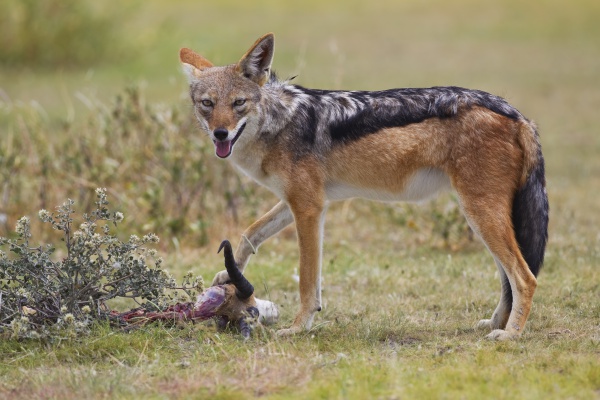Facts About Black-backed jackal
The black-backed jackal is a captivating canid species native to eastern and southern Africa, with populations separated by approximately 900 kilometers. Although often viewed as a livestock predator and a vector for rabies, this adaptable animal is listed as "Least Concern" by the IUCN due to its versatility and extensive range.
This species has ancient origins, dating back to the Pleistocene era, and it shares a close relationship with the side-striped jackal. Remarkably, it has remained relatively unchanged for millions of years. The black-backed jackal is monogamous, meaning it pairs with a single mate, and boasts a diverse diet that includes small to medium-sized animals, plant matter, and even human refuse.
From a taxonomic perspective, the black-backed jackal has inhabited eastern and southern Africa for at least 2-3 million years. Fossil records suggest it once had a broader distribution across sub-Saharan Africa. Genetic research indicates a significant divergence between the black-backed jackal and other wolf-like canids, prompting discussions about potentially revising its scientific classification. Some studies even propose that the two subspecies of black-backed jackals might be distinct enough to be considered separate species.
Visually, the black-backed jackal resembles a fox, sporting a reddish-brown to tan coat with a distinctive black saddle marking on its back. These animals are monogamous and territorial, with social structures akin to those of the golden jackal. Their breeding season runs from late May to August, and the pups are born blind. Both parents, along with older offspring, participate in caring for the young. As omnivores, black-backed jackals have a varied diet that includes invertebrates, mammals, carrion, fruits, and more.
In the folklore of various indigenous groups, the black-backed jackal often holds significant cultural importance. However, their tendency to prey on livestock has led to conflicts with farmers. Over the years, hunting black-backed jackals has been a common practice, employing various methods to manage their populations. Additionally, these jackals can carry diseases and parasites that pose risks to other animals and humans.

 Libya
Libya